Welcome to Part 2 of my Tohoku travelogue. If you have read the first part already and are ready for more, welcome back! If not, perhaps give Part 1 a browse before reading further.
When I lived in Yamagata, there was a direct train to Sendai. The train was rickety, old, slow, shaky and noisy, but also cheap. It took slightly over an hour to traverse the hills separating the two cities and was a trip I did almost every weekend.

Sometime between 1997 and 2024 that train line was shut down. The current options for the Yamagata-Sendai trip are a one-hour bus or the slightly longer Yamagata-Fukushima-Sendai route on the shinkansen. Since the shinkansen was covered by our rail pass, we decided on the bullet train. The shinkansen meant a train change at Fukushima, which gave us time for “second lunch,” after which a short train ride and we arrived in Sendai mid-afternoon.

Sendai
Sendai is the largest city in Tohoku with population proper of 1.1 million (and 2.3 million in the metropolitan area). It was established in the 1600s as the castle town of the Date clan. It’s now best known for Tanabata matsuri (festival) in early August each year, gyu-tan (grilled cow tongue), and for being close to the epicenter of the 2011 Tohoku earthquake. It’s also a hub for Tohoku folks looking for entertainment, shopping or a weekend away without going to Tokyo.
Unknown to me at the time of booking, our hotel was right next door to AZUR Sendai, my work building of 25 years ago, which brought on a few waves of nostalgia.

For record shoppers there’s lots going one. Proceed Music Shop seemed promising so we headed out a few stops by train only to find we had misread their opening hours and were closed. The store is on the main floor of the owner’s house, and after some wrangling with his mother he graciously opened for us to browse a bit. Not a lot of jazz, but lots of club music, so Miles left with several disks.

We also hit a couple of stores near our hotel. Store15Nov was interesting, but with a strong focus on avante garde, progressive (?) and noise genres and we didn’t stay long. We then moved onto Disk Note which has a great jazz section, and we both walked away with treasures to take home. When we finished there evening had descended, and it was Kissa time.
Jazz Spot Count
Although Sendai is a major center, we had only one Kissa target and that was Jazz Spot Count. There are lots of jazz bars around, many with live jazz, but none of them seemed to fit our Jazz Kissa definition or image.

Count did not disappoint! It was another great experience with a friendly master and patrons. The shop is very much music-focused and volumes are robust, but conversation is not frowned upon. The sound system is impressive, with massive Altec VOTT (Voice Of The Theatre) speakers the focal point of the space and driven by an AB Precedent Series 400 power amp.

Turntables are a Thorens TD-125 Mk. II and yet another Denon (this a DP-3000). The sound was impressive, but Miles did comment after a while that the treble was perhaps just a touch fatiguing (or might become so).

Most customers on this evening were regulars and sat up at the bar together where they could chat with each other and the master; some had “bottle keeps” (personal bottles bought and kept at the shop), and for the smokers the master knew to set them up with an ashtray without being asked.

Once again, interesting conversations were had, with suggestions from one regular for another Morioka Kissa when we headed there the next day, and an introduction to one of the regular customers, jazz pianist Mayuko Katakura (I’ve listened to and enjoyed two of her albums – Plays Standards and Plays Coltrane – on Qobuz and have CDs on the way as we speak).

This was also the first Kissa where I noticed a flippable A/B tag near the “Now Playing” cover display which tells which side of the record is playing; once seen, this cannot be unseen, and I noticed it in several other establishments through the rest of the trip.
After a couple of hours, our stomachs started rumbling (we’d not eaten before arrival) so we headed out for more meat on sticks (including gyu-tan) at the restaurant that shares the building with Count. The Kissa and restaurant were both hits and are well worth adding to a Tohoku itinerary.

Morioka
Morioka is just over an hour north of Sendai by shinkansen. My recollections from the few times I visited back in the day were nothing special: a smallish city with nothing much going on. Then again, my experiences were limited to observing ESL lessons, training teachers, going out for food and drinks after, and spending the night in a budget business hotel before heading somewhere else the next day.

Somehow in January 2023 the city earned 2nd place (behind London) on the New York Times’ list of “52 Places to Go in 2023” described as a “walkable gem without the crowds.” Iwate Park, site of the now-demolished Morioka Castle is popular for cherry blossoms in spring and fall colors in autumn. The Ishigaki Music Festival in September is also popular.

Food-wise Morioka is known for wanko soba and reimen, neither of which we would enjoy during our stay (I skipped dinner as I was getting hammered by a non-COVID cough and decided on an early night after our evening Jazz Kissa stop, where I had been masked to protect the innocent).

Morioka turned out to be a bit of a paradise for record shopping with a Disk Note store (unfortunately closed the two days we were in town) and two fruitful locations for Miles, Knowledge Record near the station and Neat Records across the road from Iwate Park. I picked up a couple of records at Knowledge, but didn’t find anything on my want list at Neat. Perhaps the New York Times writer who nominated Morioka for the Best Places article is a vinyl lover.
Kaiunbashi No Johnny
Jazz Kissa or jazz museum? Both? So much to unpack from our visit here (and big thanks to the Count regular who recommended it the night before). An unusual set up in this shop with a kitchen-table layout less about listening to music and more about conversing and learning about it and each other.

Most of the folks around the table the evening we were there – a mother (84) and two daughters (50s) visiting from Nagoya, and a trio of jazz musicians doing a recording session the following day, including a young American student at university in Aizu Wakamatsu – were first-timers and complete strangers, but we had a lively 2+ hours of music discussion while jazz swirled about us from the speaker wall.

The master here, Ken Terui (aka. Johnny) and his wife, Harumi, were gracious and enthusiastic hosts. I was the first kyakusan (customer or guest) to arrive on this evening (the others rolled in over the following hour or so). When I came in, Ken, Harumi and a young guy who I assumed was their grandson were sat at the table eating Japanese sweet jellies they’d received earlier that day as omiyage (a travel souvenir) from another customer. They swiftly cleaned up the table and switched from “relaxing” to “host” mode, and offered me one of the jellies, which was delicious.

Miles later learned that the young guy is a local high school student who’s also quite a talented pianist. He practices sometimes at the shop, but as part of a school project is also helping Terui-san prepare his memoirs (doing the typing and other IT tasks).

Terui-san got his Jazz Kissa start over 50 years ago with a well-known shop called Johnny in Rikuzen Takata (on the Iwate Coast) that was obliterated by the tsunami of 2011. He had set up this space in Morioka a decade plus before the tsunami, so didn’t lose everything to the water. Johnny has been rebuilt, but I’m not sure how much Terui-san has to do with it.

Back in the day Terui-san produced a couple of my white whale J-Jazz records, Aya’s Samba (by Eiji Nakayama) and Farewell My Johnny (by the Teru Sakamoto Trio), in addition to some others that are less well known. I have digital copies of both, but OG vinyl seems somewhat out of reach based on small original press runs. The Sakamoto had a recent reissue of only 500 copies which I sadly missed out on. Hopefully there’s another pressing to come.

I do have a recent reissue of the Nakayama which surprised (more like shocked) Terui-san as he was under the impression there hadn’t been any reissues after the original (and as rights holder he should know). Seems there was a copyright violation on that release which is sad, and which leaves me reluctant to play and enjoy the copy I have, particularly seeing how upset he seemed by news of its existence.
In the course of conversation, I told Ken and Harumi that we had originally planned to stop in Ichinoseki on the way up from Sendai to visit Basie, but changed our plans when we learned Basie was temporarily closed. Harumi is friends with the Basie owner and let us know it may not open again as the owner has had health issues the last couple of years and has been in and out of hospital; she doubts he’ll be able to continue running the shop in the future.

In addition to running Kaiunbashi No Johnny, Terui-san is a huge Toshiko Akiyoshi fan (there were concert posters stuck all over the ceiling), and he established and runs a museum near Morioka station dedicated to her life and music.
Our visit here was definitely one to remember, and I must message him some time to find out about developments in the Aya’s Samba debacle.
Dante
Our second Morioka Jazz Kissa the following morning was a bit of a mixed bag for me, and not only because Dante was the first Kissa I’ve visited that wouldn’t allow me to see or take pictures of their audio equipment (other than the imposing speakers – handmade cabinets with JBL 153 woofers and JBL tweeters – that are impossible to hide).

My mood wasn’t helped by the fact I had to sit through a full side of Sammy Davis Jr. (not my cup tea) live at the Sydney Opera House in 1977 (the year Dante opened), but that was followed by Side A of Charles Lloyd’s Forest Flower, which was absolutely brilliant.

Dante is one of many rural Kissas just barely hanging on, with few customers, aging owners and ever diminishing hopes of long-term survival. The mama-san here told me the shop has become more a museum than a business, and she and her husband spend a lot of their opening hours listening to music on their own.

A sign on the wall apologizing for a ¥50 price increase for coffee and lunch earlier this year (only the second increase in 47 years) was a stark reminder of harsh financial pressures for the shop and perhaps limited resources for their aging clientele.

Despite the fact Dante is unlikely to outlast the husband-and-wife owners (they have no succession plan), the mama-san remained upbeat, stating simply, “The Jazz Kissa era is ending.” I so hope that’s not true.
Hirosaki
The train journey from Morioka to Hirosaki is about twice the distance a crow would fly to get from one to the other, consisting of a 50-minute shinkansen dash to Aomori, and then a 40-ish-minute, 8-stop local train ride to Hirosaki. The bullet train ride flew by, but that last 40 minutes felt never-ending. My cough had been okay in the morning in Morioka, but by the time we got to Hirosaki I was in no mood really to do much at all.

Hirosaki is probably most famous for its well-preserved castle, and the surrounding park is spectacular in spring when the cherry blossoms are out. The park is also famous for a leaf-viewing festival in fall, and a snow lantern festival in winter.

In early August, the Neputa Festival (similar to Nebuta in Aomori) features a parade of huge, colorful, paper floats lit from the inside and accompanied by shakuhachi (flutes) and taiko (traditional drums).
Other attractions are Mount Iwaki, a large, dormant volcano, and the Hirosaki Apple Park (Hirosaki is the main apple growing area in Japan). Hirosaki is in the Tsugaru region, which is also famous for lacquerware.

Like Yamagata, Hirosaki’s “downtown” (or main street) is a fair walk from the station. At least that’s how it used to be. Unlike Yamagata, the center of activity has shifted to the station area, and what was the main drag in the late ‘90s (when Miles lived there and I visited briefly on a couple of occasions) is now a ghost town: almost no people, many businesses (including the main department store) closed, and generally depressing.
As it turned out, the hotel I’d booked for us is in the same building that used to house a large Kinokuniya bookshop (now closed) and the school Miles taught at (also long closed after the parent company went bankrupt in 2010). It didn’t seem anything had taken over those spaces.

While it’s natural to romanticize and embellish impressions of places from our past, and the overall fall of Hirosaki may not be as severe as our impressions, both Miles and I were saddened by the decline we witnessed.
A Jazz-Kissa-less Evening
Miles and I had planned on visiting a particular Jazz Kissa a short walk from our hotel. By the time we got checked in, I wasn’t feeling up for much, but I checked out the location and looked at some reviews, many of which were quite negative. My reading told me the owner was not very friendly, and that overcharging was quite common at the end of a night there. We decided to give this shop a miss.
At that point I decided I would take the night off completely as I hadn’t slept well the past couple of nights and was feeling bushed. I wandered down to a nearby conbeni (convenience store) for some juice and water and a couple of sandwiches – Tonkatsu (pork cutlet) sandwich for dinner, and an Anthony-Bourdain-special egg salad for breakfast (Bourdain swore the Japanese egg salad conbeni sandwich was a peak of culinary achievement, and it was a staple of my entire Japan trip). Back at the hotel I ate my sandwich and was in bed by about 7:00.
Miles had the evening to explore and re-acquaint himself with the city on his own, including a night-time visit to the castle and finding his old apartment building (surprisingly still standing, even though he felt it ready for demolition 25 years previous).

He learned about another Jazz Kissa in town – Jazz Room Union – but was disappointed to find it closed for the night when he arrived after a good walk.

On the bright side he discovered an excellent whisky bar, Pub Grandpa, on his way back to the hotel where he got to try several Japanese and Scotch whiskies and was treated to a dram of Johnny Walker King George V by one of the customers. The generosity of many Japanese to foreign tourists can be quite surprising!

Still a Stop to Go
Hirosaki was our last stop in Tohoku, but we still had one city to go on this adventure: Hakodate, just across the Tsugaru Strait near the southern tip of Hokkaido. In Part 3 of my travelogue, I tell about our visit there, and wrap up with some of my observations about the current state and the possible future of Jazz Kissa in Tohoku.
Related Reading:








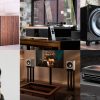



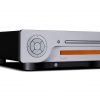
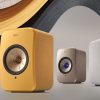
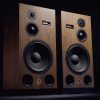
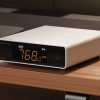
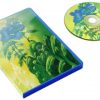













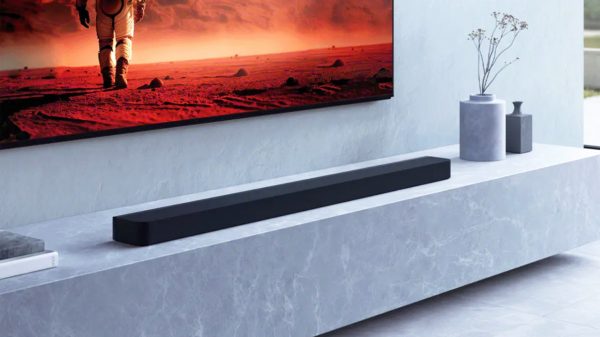
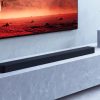

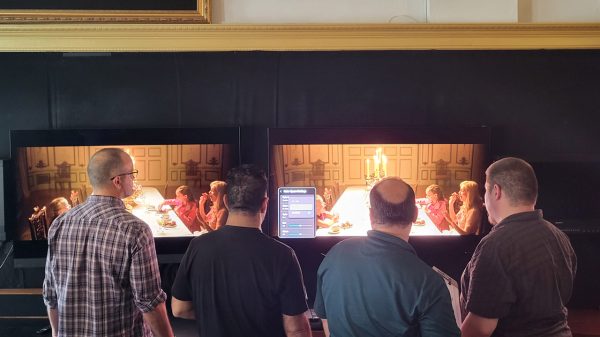
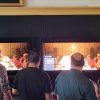











Mike Cornell
November 5, 2024 at 12:56 pm
Really enjoying this series, Eric! I’ll definitely be using it as a reference as my wife has expressed interest in visiting Japan in the near future. On another note, though I love your 70’s inspired vintage listening room, I’m wondering if/when a Jazz/Kissa inspired room is in your future with some vintage JBL, Altec or even Klipsch speakers! Time for a makeover?!😀
Ian White
November 5, 2024 at 4:58 pm
Mike,
You’re going to be pleasantly surprised with Part III. Saying nothing more.
IW
Eric Pye
November 6, 2024 at 3:03 pm
Thanks Mike. My biggest wish from this series is that people like you will be inspired to make a similar trek. There is a good chance my wife and I will retire to Japan, and also that that might involve starting or taking over a Kissa. On the home front, I picked up a pair of Klipsch Forté II this past weekend, and the space is indeed more Kissa-like!
Ian White
November 6, 2024 at 4:28 pm
Eric,
Now that is exciting. Definitely go with a Thorens TD-125 MkII as your main deck.
IW
Eric Pye
November 7, 2024 at 1:58 pm
On my radar already…
Mike Cornell
November 7, 2024 at 12:49 pm
Well that’s pretty cool! I’ll definitely stay tuned for part 3 and to see how everything all pans out!